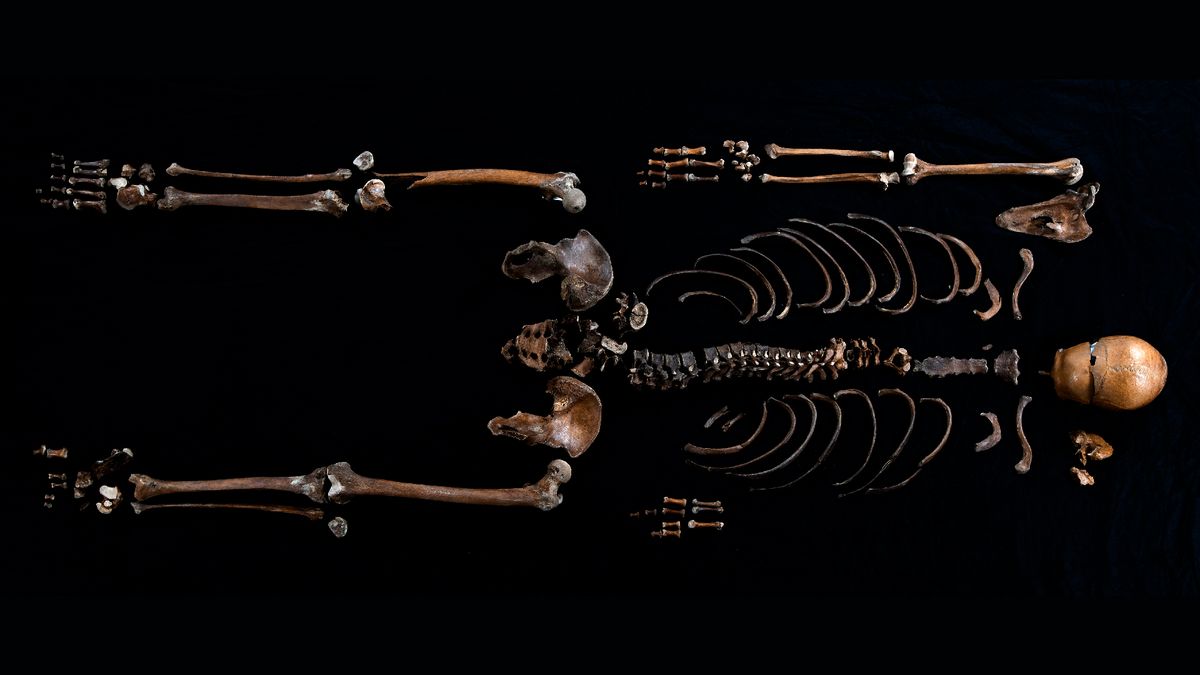At the heart of this cosmic revelation lies Palomar 5, A A stellar stream extending across 30,000 light-years From space. Located about 80,000 light-years from Earth, this celestial wonder has captured the attention of scientists around the world. Unlike typical globular clusters, Palomar 5 displays a unique property: a long, sprawling river of stars extending more than 20 degrees from the sky.
The researchers, led by astrophysicist Mark Gillis of the University of Barcelona, carefully studied Palomar 5 using advanced N-body simulations. These simulations recreate the orbits and evolutions of individual stars within the cluster, providing a glimpse into their cosmic journey. The results were nothing short of amazing.
The team's findings suggest that Palomar 5 harbors unexpected treasure: A swarm of more than 100 stellar-mass black holes. This discovery challenges previous assumptions about the formation of globular clusters and opens new ways to understand the formation of stellar streams.
Black holes: architects of stellar streams
The presence of black holes inside Palomar 5 appears to play a crucial role in shaping its unique structure. Gravitational interactions between stars and black holes act as cosmic catapults, pushing stars out of the cluster and into the tidal stream. This process occurs more efficiently for stars than for black holes, gradually changing the cluster's composition.
Interestingly, simulations revealed this Black holes make up more than 20% of Palomar 5's total mass. This ratio is approximately three times higher than initially expected based on the number of stars in the cluster. Each of these black holes has a mass of about 20 times the mass of our Sun, and they arose from supernova explosions during the early stages of the cluster.
The implications of this discovery extend far beyond Palomar 5. Scientists now believe that other globular clusters may share a similar fate, eventually dissolving into stellar streams. This discovery provides valuable insights into the life cycle of these cosmic structures and their role in shaping our galaxy.
Cosmic Rosetta Stone
The unique properties of Palomar 5 make it an invaluable tool for understanding the formation and evolution of stellar streams. As Gillis explains, “Palomar 5 is the only case, making it a Rosetta Stone for understanding flow formation.” This celestial oddity provides astronomers with a rare opportunity to study the mechanisms behind these cosmic rivers in unprecedented detail.
The research team's simulations paint a fascinating picture of the future of Palomar 5. This cluster is expected to completely melt in about a billion years. Just before this final act, the cluster's remnants will consist entirely of black holes, orbiting silently around the galactic center.
This discovery has important implications for our understanding of black hole swarms detected in ancient star clusters in the Milky Way. It suggests that globular clusters may be prime locations for observing black hole collisions and searching for elusive intermediate-mass black holes.
Implications for future research
The discovery of this black hole swarm at Palomar 5 opens exciting new horizons for astronomical research. Here are some key areas that scientists are eager to explore further:
- The role of black holes in forming galactic structures
- Formation and evolution of stellar streams
- The possibility of detecting gravitational waves resulting from the merger of black holes
- Searching for intermediate mass black holes
As our understanding of these cosmic phenomena grows, so does our appreciation for the complexity and beauty of our universe. The discovery of Palomar 5 is a testament to the power of advanced simulations and observational techniques to uncover the secrets of the universe.
| Featured | Palomar 5 | Typical spherical cluster |
|---|---|---|
| building | Loose, stretchy | Dense, spherical |
| Tidal current | present | absent |
| Black hole ratio | > 20% of the total mass | ~ 7% of the total mass |
As we continue to explore the vast expanse of our Milky Way Galaxy, discoveries like Palomar 5's black hole swarm remind us of the endless wonders that await our inquisitive minds. The cosmic dance of stars and black holes paints an enchanting picture of our galactic home, inviting us to delve deeper into the mysteries of the universe.

“Extreme travel lover. Bacon fanatic. Troublemaker. Introvert. Passionate music fanatic.”


![[ساحر دافني]How to restart[مع دافني]|](https://appmedia.jp/wp-content/uploads/2024/10/180938_zkndr.webp)




More Stories
Kate Connor and Rachel Ziegler in Romeo and Juliet
DNA analysis of a medieval man thrown into a well suggests that a story in the Norse sagas actually happened
The case of Lyle and Eric Menendez: What's next for brothers convicted of killing their parents